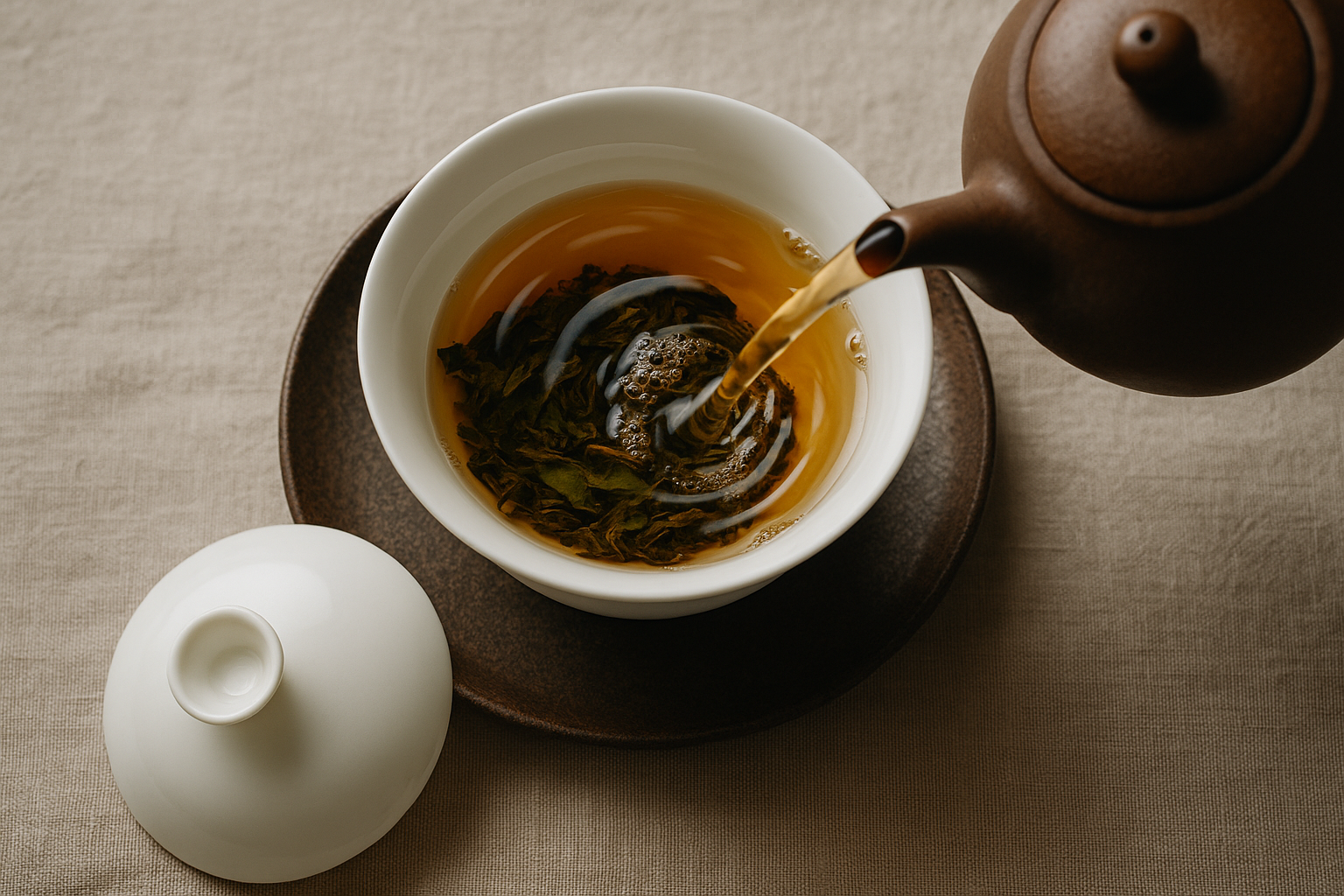The Final Pour: How Movement Shapes the Cup (Part 3)

Brewing tea is not only about what goes into the pot but also about how it flows through it. The pour is where physics and intention meet, and even small choices in movement can change the entire sensory experience. The angle of your stream, the rhythm of the pour, or the swirl of the steep are not simply gestures. Each one influences aroma, texture, and flavor, revealing new dimensions of the leaf.
When viewed this way, pouring becomes more than a step in the process. It becomes a craft, an extension of the dialogue between leaf, water, and vessel.
Pouring In: The Art of Entry
The way water enters the vessel sets the tone for extraction. A steady, unbroken stream maintains temperature and saturates the leaves evenly. This method is especially well suited for high-fragrance teas such as oolongs, white teas, or sheng pu’er, where preserving delicate aromatics is essential. By contrast, a circular pour gently agitates curled or rolled leaves, encouraging them to unfurl and release their oils more quickly. There is also the practice of pouring from the side and allowing the flow to move toward the center. This creates subtle currents that distribute both heat and soluble compounds more evenly, a technique particularly valued in gongfu-style brewing.
Each method produces a slightly different cup. A stable stream highlights clarity, a circular pour brings roundness, and a side-to-center technique integrates texture. Comparing them with the same leaves makes clear that the pour is not passive but active, guiding what the tea chooses to reveal.
To Stir or Not to Stir: Agitation and Intention
Agitation in brewing is neither inherently helpful nor harmful. It depends entirely on intention. Stirring, for example, speeds up extraction. It can be useful when preparing cold brews or very short infusions, where time is limited, but if overdone it risks drawing out bitterness and harshness. Swirling offers a gentler path. A soft rotation of the vessel integrates flavors, helps the leaves settle, and allows the liquor to clarify. Yet too much swirling can cloud the tea and disrupt balance.
Delicate teas often benefit most from restraint. Rather than stirring or swirling, letting the initial pour create natural convection currents is enough. Heat itself will guide the water through the leaves, releasing compounds in a gradual and harmonious way. The choice, then, is not about whether to move the tea but about how much to intervene in what the water and leaf are already doing together.
The First Infusion: Rinse or Reveal?
The first steep has long been a point of discussion among tea drinkers. Some choose to discard it, treating it as a rinse that wakes the leaves, removes dust, and primes the pot. This practice is especially common in gongfu brewing, particularly for pu’er and other dark teas where clarity and cleanliness are valued. Others, however, choose to savor the first infusion, believing it holds the highest aromatic potential. In many high-grade teas, the most delicate floral volatiles are released earliest, making the first cup uniquely fragrant and fleeting.
Neither approach is absolute. The choice depends on what you seek in the moment. If clarity and warmth matter most, rinsing may serve you well. If fragrance and nuance are what you want to experience, sipping the first infusion slowly may feel more rewarding. The important part is not which option you choose, but the intention with which you make the choice.
Portman Tea’s Perspective: Movement as Mindfulness
At Portman Tea, we view pouring as a sensory dialogue, a moment where hand, vessel, and leaf align. The way you pour shapes the tea’s voice. It influences clarity, warmth, rhythm, and even the way you engage with the cup. Each pour is an act of care, one that acknowledges both the potential of the leaf and the mood of the drinker.
When you approach pouring with presence, it becomes more than mechanics. It becomes an expression of attention, a way of rooting yourself in the moment through movement.
Pour with Purpose
Pouring styles are not fixed rules but ways of shaping experience. A steady stream preserves fragrance. A circular pour encourages leaves to open. A swirl can integrate flavors, while stillness allows the tea to clarify on its own. Choosing whether to rinse or savor the first infusion sets the tone for the session. Each decision adds a layer of meaning, making pouring less about function and more about dialogue.
The final pour is your signature on the tea you prepare. When done with awareness, it transforms brewing into an experience that is both expressive and grounding. What begins as a stream of water becomes a gesture of intention, turning tea from a simple beverage into a practice of presence.
Revisit Part 1: Shape and Material to understand how vessel design shapes expression, or Part 2: Vessel Texture to uncover how glaze and thickness quietly transform the cup.
